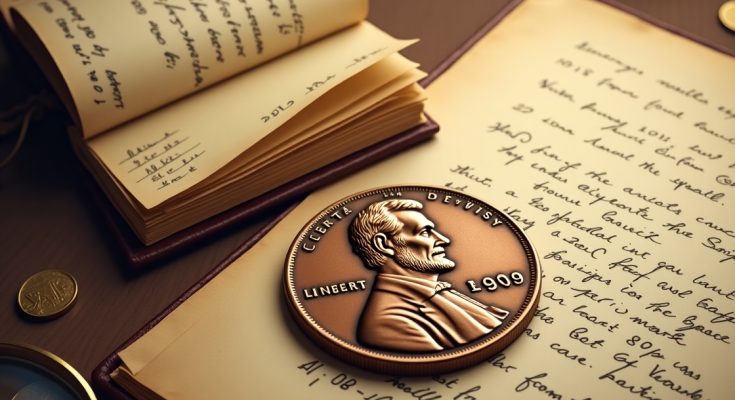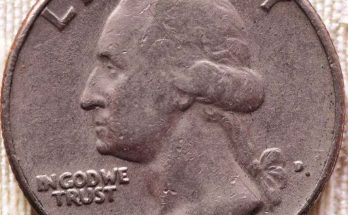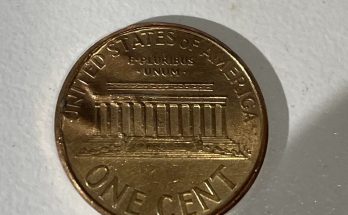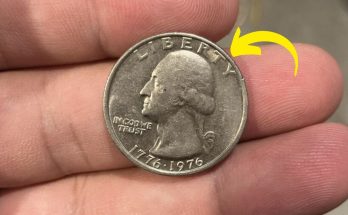Unearth the story behind the 1909 VDB Lincoln Penny, a rare and valuable coin that has captured collectors’ hearts for decades. Learn how to identify these pennies, why they’re so valuable, and what makes them a prized possession in the numismatic world. Find out if your loose change holds a $200,000 treasure!
If you happen to have a coin jar sitting at home, now is the time to dig through it. Among your loose change, you might just find a 1909 VDB Lincoln Penny, a coin that has captured the attention of collectors for decades. Some of these rare pennies have fetched prices as high as $200,000 in auctions, making them treasures in the world of numismatics.
But what makes this penny so special? And how can you determine if you have a valuable piece of history? Let’s dive into the details.
This 1909 VDB Lincoln Penny Could Be Worth $200,000:
| Feature | Details |
|---|---|
| Coin Name | 1909 VDB Lincoln Penny |
| Designer | Victor David Brenner |
| Notable Varieties | 1909 VDB (Philadelphia), 1909-S VDB (San Francisco) |
| Mintage | 27,995,000 (1909 VDB), 484,000 (1909-S VDB) |
| Highest Auction Price | $200,000 for pristine 1909-S VDB coins |
| Identifying Features | “VDB” initials on the reverse side near the bottom rim |
| Official Resource | U.S. Mint Official Website |
The 1909 VDB Lincoln Penny is more than just a coin; it’s a piece of American history. Whether you’re a seasoned collector or a curious beginner, discovering one of these rare pennies can be an exciting and profitable experience. By understanding its history, identifying key features, and consulting professional resources, you could uncover a valuable treasure in your own collection. If you suspect you own one, take the necessary steps to authenticate, grade, and preserve it.
What Is the 1909 VDB Lincoln Penny?
The 1909 VDB Lincoln Penny was minted to commemorate the 100th anniversary of President Abraham Lincoln’s birth. It was the first U.S. coin to feature a president’s portrait, designed by renowned sculptor Victor David Brenner. His initials, “VDB,” were prominently displayed on the reverse side, below the wheat stalks.
Due to public backlash over the visibility of Brenner’s initials, the U.S. Mint removed them shortly after production began. This created two distinct varieties:
- 1909 VDB Penny: Produced at the Philadelphia Mint without a mint mark.
- 1909-S VDB Penny: Produced at the San Francisco Mint, identifiable by the “S” mint mark.
The limited production of the 1909-S VDB Penny—only 484,000 minted—is why it is so valuable today.
How to Identify a 1909 VDB Penny
Here are some tips to help you identify whether your penny is one of these rare collectibles:
1. Check the Date and Mint Mark
- Look for the year “1909” on the coin’s obverse (front) side.
- Check below the date for the mint mark:
- No mint mark = Philadelphia Mint.
- “S” mint mark = San Francisco Mint.
2. Look for the “VDB” Initials
- Flip the coin to the reverse (back) side.
- The initials “VDB” should be visible at the bottom center, near the rim.
3. Assess the Condition
- Coins in mint state (MS) condition with no visible wear are significantly more valuable.
- Look for original luster, sharp details, and minimal scratches.
Additionally, understanding the Sheldon Scale can provide insight into your coin’s grade. Coins graded higher on this scale—such as MS65 or above—are particularly prized by collectors and can fetch the highest prices at auctions or private sales.
Why Are 1909 VDB Pennies So Valuable?
The value of a 1909 VDB Lincoln Penny depends on several factors:
1. Rarity
The 1909-S VDB Penny is one of the rarest Lincoln Cents ever minted, with only 484,000 coins produced. This limited mintage makes it a prized possession for collectors. In contrast, the 1909 VDB Penny, while more common, still holds significant value due to its historical significance.
2. Condition
Coins are graded on the Sheldon Scale from 1 to 70, with higher grades indicating better preservation. Coins in pristine, uncirculated condition can command extraordinary prices. Even a slight imperfection can lower the value significantly, making proper handling and storage essential.
3. Historical Significance
As the first Lincoln Cent and one of the earliest coins to feature a designer’s initials, the 1909 VDB Penny holds a unique place in U.S. history. It marked a shift in U.S. coinage, emphasizing historical figures and artistic design.
4. Market Demand
Demand for rare coins continues to rise as collectors seek unique pieces to add to their collections. A 1909-S VDB Penny in perfect condition can sell for upwards of $100,000 at auction. The thrill of owning a piece of history, coupled with the potential for significant financial returns, drives this demand.
How Much Is a 1909 VDB Penny Worth?
Here’s a breakdown of approximate values based on condition and variety:
| Coin Variety | Good (G4) | Extremely Fine (XF40) | Mint State (MS65) | Auction Record |
|---|---|---|---|---|
| 1909 VDB | $8 – $10 | $15 – $30 | $100 – $200 | $56,400 (MS68, RD) |
| 1909-S VDB | $700 – $800 | $1,500 – $2,500 | $50,000+ | $200,000 (MS67, RD) |
Even lower-grade 1909-S VDB Pennies hold substantial value compared to common coins. For collectors on a budget, acquiring an “Extremely Fine” example might be a worthwhile investment that balances affordability and long-term value.
How to Determine Your Coin’s Value
If you believe you have a 1909 VDB Penny, follow these steps:
1. Authenticate Your Coin
- Use a magnifying glass to inspect the date, mint mark, and “VDB” initials.
- Beware of counterfeit coins; these are common for valuable varieties. Authentic coins often feature sharp details and consistent markings.
2. Grade Your Coin
- Coins are graded by professional services like PCGS or NGC.
- Submit your coin to receive an official grade and authentication certificate. These certificates are invaluable for verifying authenticity and commanding higher prices in the market.
3. Research Recent Sales
- Check recent auction results on platforms like Heritage Auctions or eBay.
- Compare coins of similar grades to estimate your coin’s market value. Websites like CoinTrackers also provide pricing insights.
4. Preserve Your Coin
- Avoid cleaning your coin, as this can reduce its value.
- Store it in a protective case or holder to prevent damage from handling or environmental factors.
Frequently Asked Questions (FAQs)
1. Why were the “VDB” initials removed?
The initials were considered too prominent on the reverse side, leading to public criticism. They were later reinstated in a smaller size beneath Lincoln’s shoulder in 1918, ensuring they remained a subtle but meaningful part of the coin’s design.
2. Are all 1909 Lincoln Pennies valuable?
Not all 1909 Lincoln Pennies are rare. The 1909 VDB and 1909-S VDB varieties are the most valuable due to their unique features and limited mintage. Regular 1909 pennies without the “VDB” initials are less sought after.
3. How can I sell my 1909 VDB Penny?
You can sell your coin through:
- Coin Dealers: Local shops specializing in rare coins.
- Auctions: Platforms like Heritage Auctions.
- Online Marketplaces: Sites like eBay or Etsy. Ensure proper documentation and high-quality images to attract serious buyers.
4. What is the difference between “RD,” “RB,” and “BN” grades?
These grades refer to the coin’s color:
- RD (Red): Retains most of its original copper luster.
- RB (Red-Brown): Partial luster with a mix of red and brown.
- BN (Brown): Fully oxidized with no original red color. Collectors generally prefer “Red” coins for their vibrant appearance.
5. What makes the 1909-S VDB Penny the most sought-after?
The combination of low mintage, historical significance, and the inclusion of the “VDB” initials makes it a collector’s dream. Its scarcity and demand ensure it remains one of the most coveted Lincoln Cents



